Elephant shrews, sometimes known as “jumping shrews,” or “sengis,” are small, rodent-like mammals. They get their traditional common name from the resemblance between their elongated nose (a “proboscis”) and the trunk of an elephant; as well as an incorrect assumption of a close relationship with the true shrews. There are 19 species of elephant shrews, and they are found across southern Africa.
Description of the Elephant Shrew
Elephant shrews are not rodents, but do resemble hunchbacked mice, or gerbils in their shape. They are also not true shrews but are more closely related to tenrecs, golden moles, and aardvarks. Their most noticeable feature is an elongated snout, which they can twist and turn when searching for invertebrate prey (insects, worms, and other creatures without spines). Their rear legs, which they use for hopping like rabbits, are considerably longer then their forelegs.
Elephant shrews have scaly, almost furless, tails under which is a scent gland they use for marking their territory. They have large, erect ears and many species have a pale circle around their relatively big eyes. Some of the larger elephant shrews are rather brightly colored, such as having an almost black body, but a ginger neck and head. The smaller elephant shrews tend to be brown or gray.
Some species have a “dermal shield” of thickened skin on the rump. The skin there is three times thicker than the skin on the back, and provides protection against the bites of other elephant shrews.
Interesting Facts About the Elephant Shrew
Because elephant shrews are unusual in that, unlike most small mammals, they are active during the day, they have several unusual adaptations related to escaping predators. These adaptations are further effected by the wide variety of habitats in which they are found.
- Great Speed – They have been recorded to run at speeds of 18 mph (29 km/h)
- Great Leapers – When running, they make leaps of over 3 feet (1 meter)
- Warning Signals – Many species foot-drum or tail-slap the earth if approached by a predator
- Scent Glands – They have scent glands at the base of the tail, in the genital and anal regions, on the soles of the feet, the chest, behind the ears, and the corners of the mouth
Habitat of the Elephant Shrew
Elephant shrews are not particularly common anywhere but can be found in a wide range of habitats. These include deserts, semi-arid mountains, rocky outcrops, and thick forests.
Distribution of the Elephant Shrew
Elephant shrews are only found in the wild in Africa. They live throughout the continent, except for western Africa, and the Sahara.
Diet of the Elephant Shrew
Elephant shrews mainly eat invertebrates, including earthworms, spiders, insects, centipedes, and millipedes. Some species also eat green plant matter, seeds, and small fruits.
Elephant Shrew and Human Interaction
In some countries, such as Kenya, elephant shrews are trapped and eaten by humans. Their main threats are from deforestation, habitat loss, and habitat fragmentation due to agriculture and logging.
The gray-faced elephant shrew (Rhynchocyon udzungwensis) is the largest of the elephant shrews, and was only discovered in 2005. They were the first new elephant shrew species identified in more than 120 years. The population, estimated to be fewer than 100, is restricted to a single African mountain range.
Domestication
The elephant shrew has not been domesticated, possibly because they mate for life, with just a single partner (monogamous).
Does the Elephant Shrew Make a Good Pet
Due to their very shy nature and endangered conservation status, elephant shrews do not make good pets.
Elephant Shrew Care
When kept in zoos, a tank of 20 x 32 in (0.5 x 0.8 m) is considered suitable for a single elephant shrew, but if they are kept as pairs for mating, as much room as possible should be provided to reduce aggression. A heat lamp should be provided in the tank.
Behavior of the Elephant Shrew
Elephant shrews, unlike most small mammals, are diurnal (active during daylight), or crepuscular (some activity during both daylight and night-time), which means they are usually very well camouflaged, often wary, and have well-developed senses and escape behaviors. Several species make interconnecting pathways through the undergrowth in their territories. They use these either as high-speed escape routes, or patrol them when hunting for invertebrate food. Some species build leaf nests, whereas others create burrows, or use the burrows of other species. New nests are built every 1-3 days, and take approximately 2 hours to construct.
Elephant shrews are not very sociable: females ward off females, and males fight off other males. Although they sometimes live in pairs, it often appears the sole purpose of this association is for reproduction, as social behaviors are uncommon. In some species, the male and female have adjoining home territories of approximately 4 acres (1.7 hectares), and may even have separate nests.
Reproduction of the Elephant Shrew
The mating period for elephant shrews lasts for several days. After a pregnancy gestation period (the time the babies remain in the mother’s body), varying from 45 to 60 days, females give birth to a litter of one to three young. She may have litters several times a year. The young are relatively well developed when they are born (precocial), and can run just a few hours later. However, they remain in the nest for several days before leaving for the first time. After about 14 days, the young begin to migrate and develop their own home territories. They become sexually active within 40 to 45 days. Reproduction is continuous at low latitudes, but seasonal at higher latitudes.

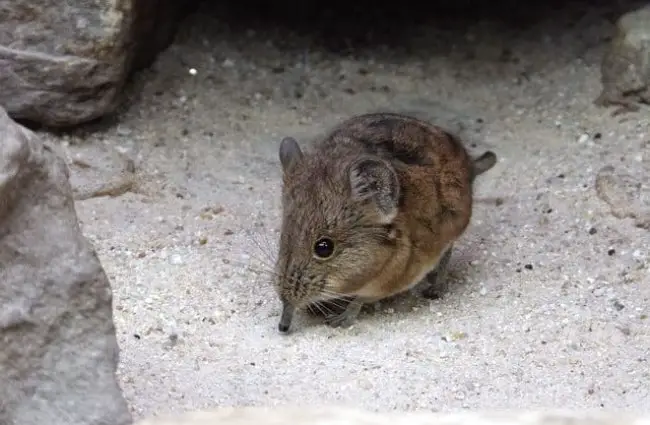
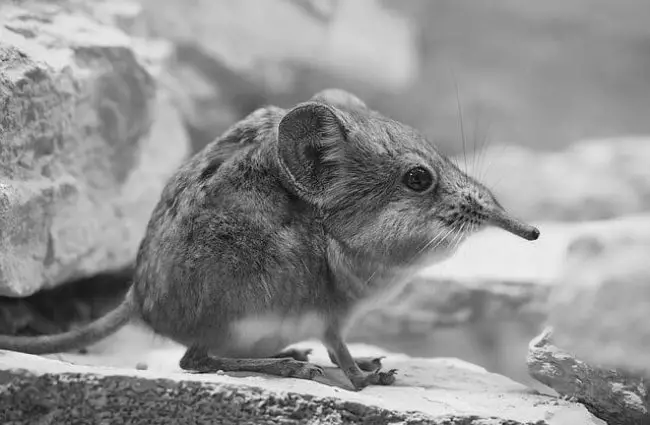
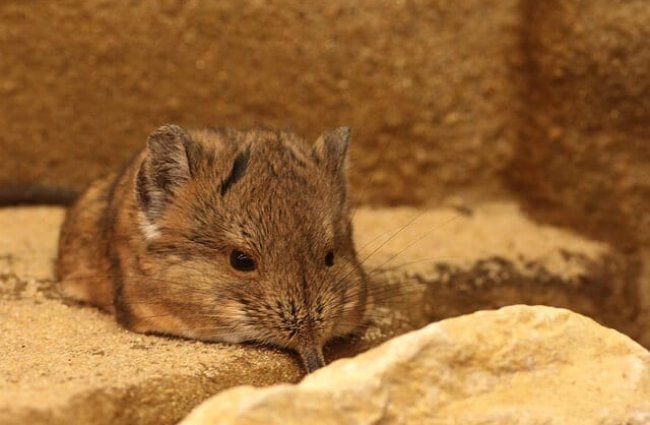
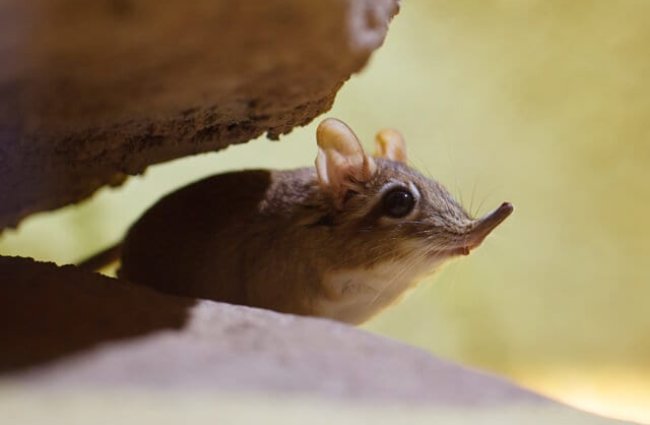

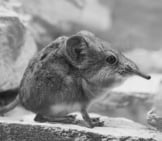
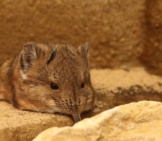
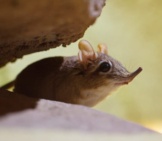










![Red Angus Closeup of a beautiful Red Angus cowPhoto by: U.S. Department of Agriculture [pubic domain]https://creativecommons.org/licenses/by/2.0/](https://animals.net/wp-content/uploads/2020/03/Red-Angus-4-100x75.jpg)

